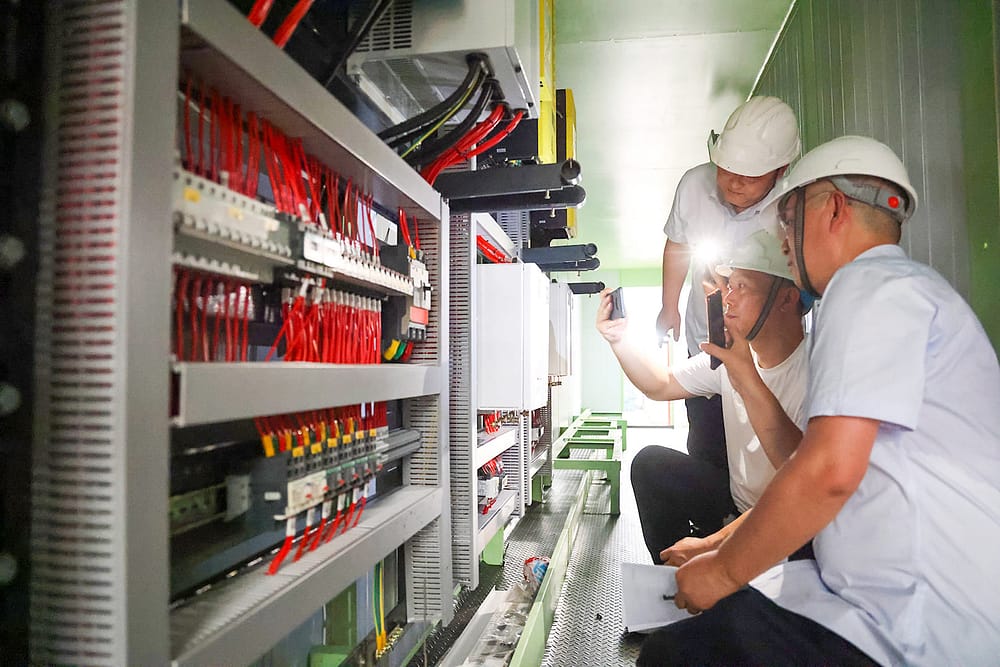Advanced technical support for electrical industry to drive success.
Advanced technical support for electrical industry to drive success.
Blog Article
Top Tips for Effective Electric System Troubleshooting
Repairing electric systems calls for a systematic technique, grounded in a thorough understanding of electric principles and security procedures. The nuances of reliable fixing expand past plain technological understanding; comprehending how to document findings and prioritize safety can significantly influence end results.
Understand the Essentials
Comprehending the fundamentals of electrical systems is necessary for effective troubleshooting, as a strong structure permits service technicians to diagnose and fix problems more efficiently. A thorough grasp of electric concepts, such as voltage, existing, resistance, and power, is important in identifying the origin of troubles. Voltage is the electric prospective difference that drives present through a circuit, while resistance opposes the circulation of present, impacting the total performance of the system.
Experience with circuit components, consisting of resistors, capacitors, diodes, and switches over, is also extremely important. Each element plays an unique role in circuit habits and can influence performance when malfunctioning. In addition, understanding collection and identical circuit setups is important, as these plans affect the circulation of voltage and current within the system.
Professionals have to be aware of potential hazards, such as shock and short circuits, to execute risk-free troubleshooting methods. By grasping these fundamental ideas, service technicians boost their capacity to perform effective diagnostics and repair work, ultimately leading to improved performance and reliability of electrical systems (electrical system troubleshooting).
Gather Necessary Tools
Effective troubleshooting of electrical systems requires the best set of tools to detect and resolve issues properly. A well-appointed professional can significantly boost performance and efficiency in determining problems. Essential devices include a multimeter, which measures voltage, existing, and resistance, permitting accurate evaluations of electrical elements. Clamp meters are also beneficial for measuring present without detaching the circuit, making certain safety and benefit.
In addition, protected hand devices such as screwdrivers, pliers, and cable strippers are important for safely controling electrical links. It is also a good idea to have a circuit tester on hand to validate the presence of voltage in outlets and wires. For more facility systems, a thermal imaging video camera can aid find overheating components, showing potential failings.

Adhere To an Organized Approach
Having actually collected the proper devices, the following action in troubleshooting electric systems is to adhere to an organized strategy. A systematic approach ensures that specialists can determine mistakes successfully and accurately, minimizing downtime and protecting against unneeded repair work.
Begin by reviewing the system's schematic layouts and specs. This includes monitoring each part systematically, starting from the power source and functioning in the direction of the tons.
Use testing devices, such as multimeters and oscilloscopes, to collect unbiased data concerning voltage, present, and resistance at numerous points within the system. This empirical evidence will certainly lead your troubleshooting initiatives and help to confirm or get rid of possible root causes of failure.
Furthermore, take into consideration environmental factors that might influence the system's efficiency, such as temperature variations or wetness ingress. A detailed assessment of circuitry, connections, and components will make sure that all opportunities are represented.
File Your Searchings For
Extensive documentation is important in the repairing process of electric systems. Accurate documents enhance the performance of determining repeating concerns and help with interaction among group participants. Each finding ought to be diligently noted, consisting of signs and symptoms observed, examinations carried out, and the outcomes of those tests. electrical system troubleshooting. This practice not only help in comprehending the origin of the problem but additionally works as a reference for future fixing initiatives.

In addition, maintaining a log of parts replaced or repairs executed is indispensable. This info sustains inventory administration and can aid analyze the long life and dependability of details elements.
Ultimately, the paperwork procedure ought to be complete yet succinct, enabling simple access and testimonial - electrical system troubleshooting. By prioritizing in-depth paperwork, service technicians can produce a valuable expertise base that not only aids in current troubleshooting yet also empowers future upkeep initiatives, therefore improving total system integrity

Prioritize Precaution
Identifying the intrinsic threats connected with electrical systems is important for making sure security throughout troubleshooting. Electrical shock, burns, and tools damage are just a few of the potential hazards that technicians encounter. Focusing on security steps is not just a lawful obligation yet likewise a moral vital that safeguards both the specialist and the surrounding setting.
Prior to starting any troubleshooting job, service technicians ought to put on suitable individual safety tools (PPE), consisting of insulated handwear covers, safety and security glasses, and flame-resistant clothes. Making certain that the job area is completely dry and complimentary of clutter can dramatically decrease the threat of crashes. It is essential to de-energize circuits prior to beginning any type of job, confirming technical support for electrical industry that they are not live via the usage of a multimeter or voltage tester.
Developing clear communication procedures with staff member is additionally essential; this makes sure that everybody knows potential hazards and the condition of the electrical system being functioned on. Having an emergency situation response strategy in area can verify invaluable in the event of a case. By focusing on safety steps, service technicians can efficiently minimize threats and cultivate a safer workplace.
Verdict
Reliable electrical system troubleshooting counts on a comprehensive understanding of basic principles and a systematic strategy. By gathering important devices, adhering to methodical assessment strategies, and meticulously recording searchings for, the repairing procedure comes to be extra reliable and dependable. Focusing on precaution makes sure the well-being of individuals entailed and the stability of the electric system. Carrying out these approaches will certainly boost the repairing experience, resulting in quicker resolutions and improved operational efficiency in electric systems.
Report this page